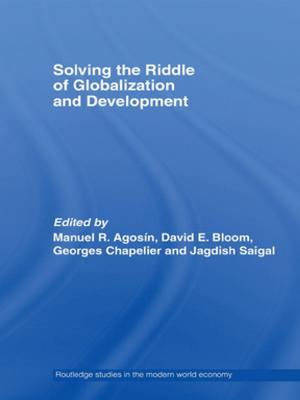CAD Principles for Architectural Design
Nonfiction, Art & Architecture, Architecture, Decoration & Ornament, Design & Drafting| Author: | Peter Szalapaj | ISBN: | 9781135389970 |
| Publisher: | Taylor and Francis | Publication: | November 5, 2013 |
| Imprint: | Routledge | Language: | English |
| Author: | Peter Szalapaj |
| ISBN: | 9781135389970 |
| Publisher: | Taylor and Francis |
| Publication: | November 5, 2013 |
| Imprint: | Routledge |
| Language: | English |
CAD Principles for Architectural Design is aimed at design students and practitioners interested in understanding how CAD is used in architectural practice. This book makes connections between the basic operations that are common to most CAD systems, and their use in practice on actual architectural design projects.
The ways in which CAD is integrated into the design processes of several leading edge practices is illustrated. Arising from these case studies is the emergence of a contemporary phenomenon of integrated CAD, in which all aspects of design schemes are brought together within computational frameworks that support the analysis of design proposals.
Szalapaj's view of CAD is one in which computers constitute a medium in which designers can express design ideas, rather than viewing computers as problem solving machines. For creative designers to successfully exploit CAD technology, CAD systems should reflect designers' intuitions as described by designers themselves
CAD Principles for Architectural Design is aimed at design students and practitioners interested in understanding how CAD is used in architectural practice. This book makes connections between the basic operations that are common to most CAD systems, and their use in practice on actual architectural design projects.
The ways in which CAD is integrated into the design processes of several leading edge practices is illustrated. Arising from these case studies is the emergence of a contemporary phenomenon of integrated CAD, in which all aspects of design schemes are brought together within computational frameworks that support the analysis of design proposals.
Szalapaj's view of CAD is one in which computers constitute a medium in which designers can express design ideas, rather than viewing computers as problem solving machines. For creative designers to successfully exploit CAD technology, CAD systems should reflect designers' intuitions as described by designers themselves















